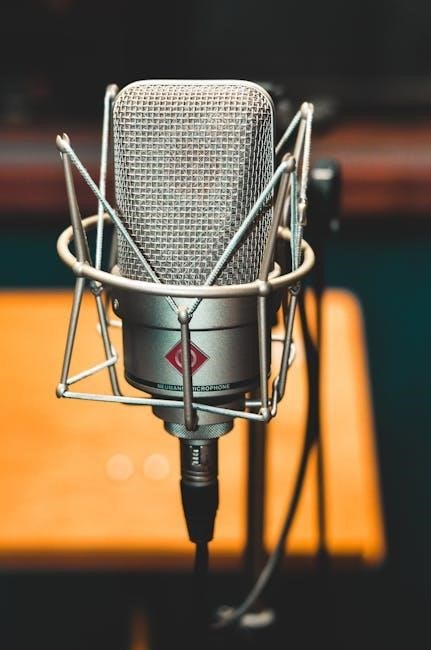
boat stereo wiring guide
Welcome to the guide on boat stereo wiring! This section will explore the essential components, wiring techniques, and safety tips for installing a marine audio system.
Understanding the Basics of Marine Audio Systems
Marine audio systems are designed to provide high-quality sound while withstanding harsh marine environments. A typical system includes a stereo head unit, amplifiers, speakers, and a wiring harness. The head unit serves as the control center, connecting to amplifiers that boost sound signals to the speakers. Marine-grade components are essential to resist corrosion and moisture. Proper wiring techniques, such as using marine-rated cables and avoiding interference, ensure reliable performance. Understanding the basics of these systems is crucial for a successful installation, whether upgrading or installing a new setup. Always follow manufacturer guidelines to ensure safety and optimal sound quality.
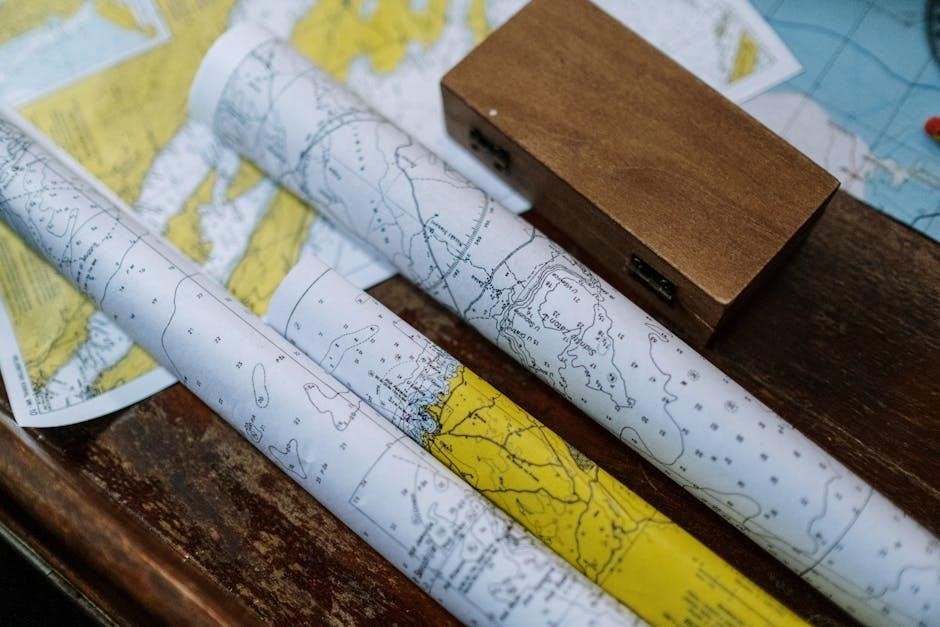
Importance of Proper Wiring in Boat Stereos
Proper wiring is crucial for boat stereos to ensure reliability, safety, and optimal performance. Incorrect wiring can lead to system malfunctions, electrical fires, or damage to components. Marine environments pose unique challenges, such as moisture and corrosion, which require the use of marine-grade wires and connectors. Correct connections prevent signal loss and interference, ensuring clear sound quality. Additionally, proper wiring protects against power surges and voltage drops, safeguarding both the stereo system and the boat’s electrical network. Always follow wiring diagrams and best practices to avoid potential hazards and ensure a durable, high-performance audio system.
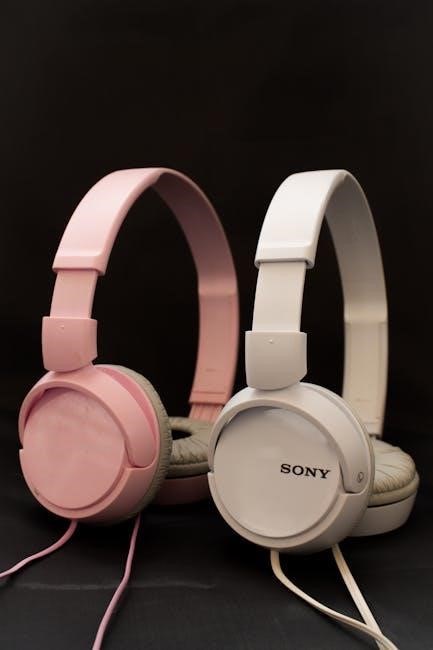
Components of a Boat Stereo System
A boat stereo system includes a head unit, amplifiers, speakers, wiring harness, and power sources. Each component works together to deliver high-quality sound on the water.
Overview of the Stereo Head Unit
The stereo head unit is the brain of your marine audio system. It provides user controls, connects to various devices via Bluetooth or aux, and distributes signals to amplifiers and speakers. Modern head units are water-resistant and designed for marine environments. They often include features like touchscreen displays, GPS, and multi-zone controls. Proper installation involves securing the unit in a dry location and connecting it using a compatible wiring harness. Always follow the manufacturer’s guidelines for installation and ensure it’s mounted within the recommended horizontal range to prevent damage. This ensures optimal performance and longevity.
Role of Amplifiers in Marine Audio Systems
Amplifiers play a crucial role in marine audio systems by boosting the audio signal from the head unit to power speakers and subwoofers. They ensure clear, distortion-free sound even in noisy marine environments. Marine-grade amplifiers are designed to withstand moisture and vibration. Proper installation involves connecting the amplifier to the head unit via RCA cables and powering it with appropriately sized marine-grade wires. Amplifiers also allow for system customization, such as adding subwoofers or multiple speaker zones. Always follow the manufacturer’s wiring diagram to ensure correct connections and prevent interference. Proper installation ensures optimal sound quality and system reliability on the water.
Types of Marine Speakers and Their Installation
Marine speakers are designed to withstand harsh marine environments, offering durability and clear sound. Common types include coaxial, component, and subwoofer speakers. Coaxial speakers are compact and easy to install, while component speakers provide superior sound quality. Subwoofers enhance bass performance, often installed in enclosed spaces like boat compartments. Installation requires mounting speakers securely, ensuring they are sealed to prevent water ingress. Wiring involves connecting positive and negative terminals, using marine-grade wires to resist corrosion. Proper placement and sealing are crucial for optimal sound and longevity. Always follow manufacturer guidelines for installation to ensure system performance and durability.
Understanding the Wiring Harness
A wiring harness is a bundle of wires and connectors that links your boat stereo’s components. Modern systems often use a 16-pin harness, with each wire color-coded for specific functions. The harness includes power, ground, speaker, and accessory wires, ensuring seamless connectivity. Key components include the power wire (red or yellow) connected to the battery, a ground wire (black) linked to the boat’s chassis, and speaker wires for audio output. A remote turn-on wire (blue) controls amplifiers or subwoofers. Proper installation requires marine-grade wires, sealed connections, and protection from moisture. Always refer to the wiring diagram for your specific system to avoid errors.
Power Sources and Battery Connections
Reliable power is crucial for your boat stereo. Connect the system directly to the battery using marine-grade wire to ensure consistent voltage. The positive (red) wire should be linked to the battery’s positive terminal, while the negative (black) wire connects to a grounding point or the battery’s negative terminal. Always install a fuse holder close to the battery to protect against short circuits. Use appropriate wire gauges—4-gauge for power and ground, and 8-gauge for speakers—to minimize resistance. Ensure all connections are secure and protected from moisture to prevent corrosion and electrical issues. Regularly inspect terminals for signs of wear or damage.
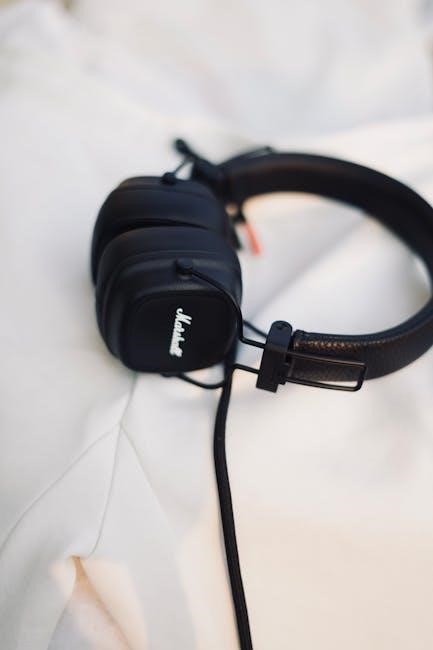
Planning and Preparation
Review wiring diagrams, choose the right tools, and select materials suitable for marine environments. Plan wire routing to avoid hazards and ensure a safe, efficient installation.
Reading the Wiring Diagram
Understanding the wiring diagram is crucial for a successful installation. It illustrates the layout of your marine audio system, including the head unit, amplifiers, and speakers. Color-coded wires simplify identification, ensuring proper connections; The diagram also highlights power sources, ground wires, and safety components like fuses. Always consult the manual or online resources for specific configurations. This step helps avoid errors and ensures system safety. By carefully reviewing the diagram, you can plan wire routing and verify compatibility with your boat’s electrical setup before starting the installation process.
Choosing the Right Wire Size
Selecting the correct wire size is vital for your marine stereo system to function efficiently. The gauge of the wire determines its ability to handle power without excessive voltage drop. Thicker wires (lower gauge numbers) are better for high-power applications and longer runs. Use marine-grade wire, which is designed to withstand moisture and corrosion. Refer to wire gauge charts to match your system’s power requirements and installation distances. Proper sizing ensures reliable performance, prevents overheating, and minimizes signal loss. Always consider the total power draw of your components when selecting wire size for optimal system functionality and safety.
Selecting the Mounting Location
Choosing the right mounting location for your boat stereo is crucial for both functionality and aesthetics. Ensure the head unit is installed within a 30-degree horizontal range and avoid drilling through the main hull. Use supplied screws and consider adding rubber grommets to protect wires. Position the stereo where it’s easily accessible but protected from direct sunlight and water exposure. Consult your dealer before drilling to avoid structural damage. This careful placement ensures durability, optimal performance, and a seamless integration into your boat’s design, enhancing your overall audio experience while maintaining safety and functionality on the water.
Tools and Materials Needed
To successfully install your boat stereo, gather essential tools and materials. Start with a wiring harness, marine-grade wires, and connectors. Use a multimeter for testing connections and ensure proper grounding. Include screwdrivers, drills, and bits for mounting. Protective gear like rubber grommets and fireproof conduits are recommended to safeguard wires. A wire stripper and crimping tool will help with connections. Additionally, a fuse holder and appropriate fuses are necessary for power protection. Having all these tools and materials ready ensures a safe, efficient, and professional installation, minimizing risks of electrical issues and enhancing system longevity on your vessel.
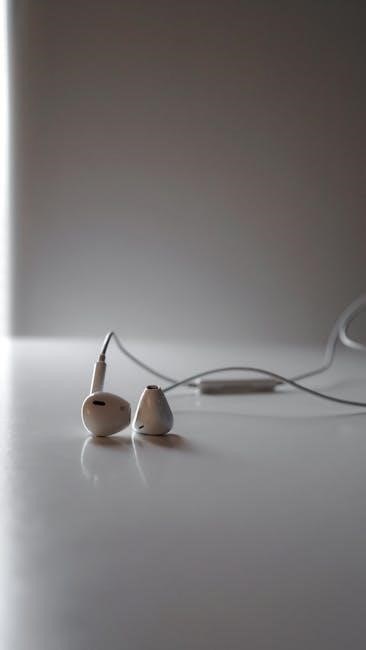
Installation Steps
Mount the stereo head unit securely, connect the wiring harness, and install the amplifier and speakers. Ensure correct wire connections, proper grounding, and test each component for functionality.
Mounting the Stereo Head Unit
Mount the stereo head unit in a secure, horizontal position to ensure proper operation. Use the supplied screws and avoid drilling through the boat’s main hull. Install within 30 degrees of horizontal and consult your dealer before drilling holes. Protect wires with rubber grommets when routing through metal or fiberglass. Ensure the unit is firmly fastened to prevent vibration or movement. Follow the manufacturer’s guidelines for installation to maintain warranty and functionality. Proper mounting ensures reliable performance and longevity of your marine audio system.
Connecting the Wiring Harness
Connect the wiring harness carefully to ensure all components function properly. Match color-coded wires for power, ground, and speaker connections. Red wires typically connect to the battery or switch, while black wires go to ground. Use marine-grade wire and connectors to protect against moisture. Avoid routing wires near heat sources like engines or exhaust pipes. Splice wires neatly and secure them with heat-shrink tubing. Test each connection for continuity before powering on the system. Proper wiring ensures reliable performance, prevents interference, and avoids electrical hazards. Follow the diagram for a seamless setup.
Installing the Amplifier
Mount the amplifier securely in a well-ventilated area to prevent overheating. Use marine-grade wire for connections to ensure durability. Connect the RCA cables from the head unit to the amplifier’s inputs. Wire the speaker outputs to your speakers or subwoofers. Ensure power and ground wires are connected correctly, using a fuse holder near the battery. Avoid routing wires near heat sources or moving parts. Secure all connections with heat-shrink tubing and test the system for proper function. Proper installation ensures optimal sound quality and prevents damage to your marine audio system.
Setting Up the Speakers
Position speakers in areas with optimal sound distribution, avoiding direct sunlight and moisture. Use marine-grade speakers designed for outdoor environments. Connect speaker wires to the amplifier or head unit, ensuring correct polarity. Use 16-gauge or heavier wire for reliable connections. Secure wires with heat-shrink tubing and route them away from heat sources. Test each speaker to ensure proper function. Consider adding bass blockers for tweeters or crossovers for subwoofers. Proper setup ensures clear, balanced sound across your boat. Always follow safety guidelines to prevent electrical issues and enjoy high-quality audio on the water.
Integrating Subwoofers
Integrating a subwoofer enhances your boat’s audio system by adding deep bass. Choose a marine-grade subwoofer designed for outdoor use. Connect it to an amplifier with sufficient power. Use RCA cables for line-level input or speaker-level inputs. Ensure the subwoofer is properly sealed to protect it from moisture. Mount it in a location with minimal vibration, such as a storage compartment. Adjust the crossover settings to blend bass seamlessly with other speakers. Test the system to achieve balanced sound. Proper integration ensures powerful, distortion-free bass, enhancing your listening experience while on the water.
Connecting Power and Ground Wires
To connect power and ground wires for your boat stereo, start by locating the battery and ensure the power wire is connected to the positive terminal. Install a fuse holder inline with the power wire to protect against surges. For the ground wire, connect it to a metal grounding point on the boat, ensuring a clean connection. Use marine-grade wire with protective sheathing to prevent moisture damage. Route wires securely, avoiding areas prone to pinching or wear. Turn off the power before making connections and test the system afterward to ensure proper function. Secure all connections to prevent looseness and potential issues.
Installing a Fuse Holder
Installing a fuse holder is crucial for protecting your boat stereo system from power surges. Choose a marine-grade fuse holder designed for outdoor environments and install it inline with the power wire, preferably near the battery. Select the correct fuse size based on your system’s current requirements to prevent overheating. Secure the holder in a dry, accessible location, away from heat sources or flammable materials. Connect the power wire to the fuse holder, ensuring a tight, corrosion-resistant connection. Test the system after installation to confirm proper functionality and protection against electrical spikes or short circuits.
Routing Wires Safely
Routing wires safely in your boat stereo system is essential to prevent damage and ensure reliable performance. Use marine-grade wire, designed to withstand moisture and corrosion. Avoid routing wires near the engine, exhaust, or moving parts, as heat and vibrations can cause damage. Secure wires with cable ties or clips to keep them tidy and protected. Drill holes carefully, and use rubber grommets to protect wires from sharp edges. Keep wires away from fuel lines and electrical components to minimize interference. Test all connections after routing to ensure proper function and safety. Proper wire routing ensures long-lasting performance and reduces the risk of electrical issues.

Advanced Installation Considerations
Advanced installation considerations include using marine-grade materials, protecting wires from moisture, and ensuring proper grounding to prevent electrical interference and optimize system performance.
Using Marine-Grade Wire
Marine-grade wire is specifically designed for use in harsh marine environments, offering superior resistance to moisture, corrosion, and UV exposure. It features tinned copper strands, PVC insulation, and thick shielding to prevent signal interference. Unlike standard automotive wire, marine-grade wire meets rigorous standards like ABYC and NMMA, ensuring durability and safety. Always opt for wire labeled as “marine-rated” to withstand the challenges of saltwater, humidity, and temperature fluctuations. Using substandard wire can lead to premature degradation, electrical failures, and potential fire hazards. Properly selecting and installing marine-grade wire ensures reliable performance and longevity for your boat’s stereo system.
Protecting Wires from Moisture
Moisture is a significant threat to boat stereo systems, as it can cause corrosion and electrical failures. To protect wires, use marine-grade wire with waterproof insulation and sealed connectors. Route wires through dry, protected areas and avoid exposing them to direct water contact. Apply silicone sealant or heat-shrink tubing to connections for added protection. Regularly inspect wires for signs of water damage or corrosion. Consider using waterproof grommets when passing wires through bulkheads or decks. Properly securing and shielding wires ensures long-term reliability and prevents electrical issues in harsh marine environments.
Avoiding Interference
Avoiding interference is crucial for clear audio and proper system function. Route wires away from engines, generators, and other electrical components to minimize electromagnetic interference. Use shielded marine-grade cables to reduce noise from nearby devices. Ensure proper grounding to prevent ground loops, which can cause hum or static. Keep wire runs as short as possible and avoid crossing power and signal wires. Use twisted-pair cables for speaker wires to reduce crossover noise. Properly secure all connections to prevent vibration-induced interference. These practices ensure a clean, uninterrupted audio experience and protect your system from electrical interference in the marine environment.
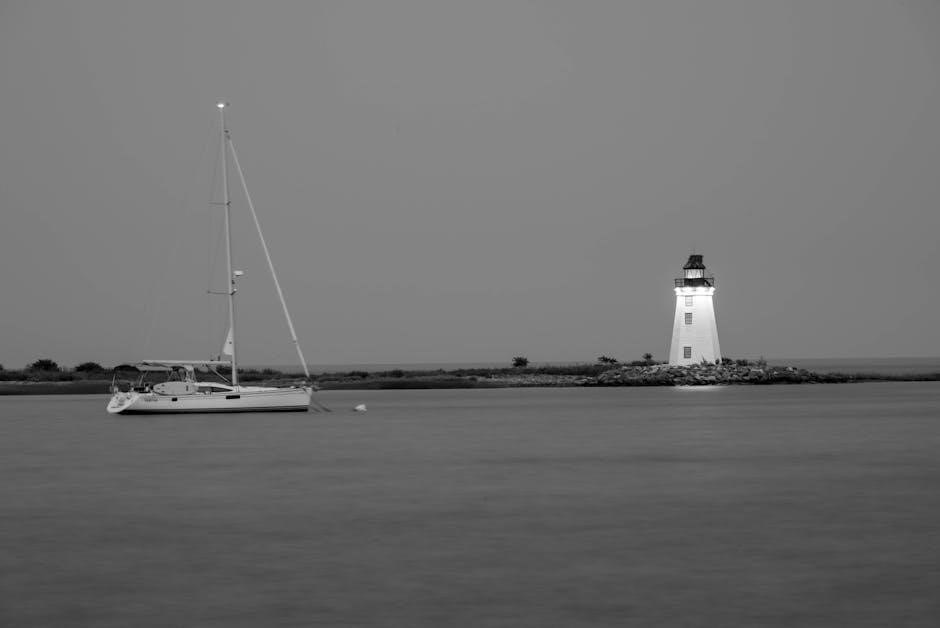
Troubleshooting Common Issues
Troubleshooting common issues in boat stereo wiring involves checking connections, ensuring proper grounding, and verifying power sources. Consult wiring diagrams to identify faults and resolve them effectively.
Diagnosing No Sound Issues
Diagnosing no sound issues in a boat stereo system begins with checking power connections. Ensure the head unit is turned on and the volume is up. Verify all wires are securely connected, especially the RCA cables to the amplifier. Check for blown fuses or tripped circuit breakers. Test speaker wires for continuity and ensure they are properly grounded. If using an amplifier, confirm it is powered on and settings are correct. Consult the wiring diagram to trace connections and identify potential faults. If issues persist, consider testing individual components like speakers or the amplifier to isolate the problem. Always turn off the power before making adjustments to avoid damage or electrical hazards.
Fixing Intermittent Connections
Intermittent connections in a boat stereo system can be frustrating. Start by inspecting all wiring and connections for corrosion or damage. Clean or replace corroded terminals and ensure all wires are securely fastened. Use marine-grade wire to withstand moisture and vibrations. Check for loose connections at the head unit, amplifier, and speakers. Apply waterproof connectors or sealants to protect exposed wires. Route wires away from heat sources and high-traffic areas to prevent damage. Test grounding points to ensure proper electrical flow. If issues persist, use a multimeter to identify faulty wires or connections. Secure all wires with ties to prevent movement-related disruptions.
Resolving Power Problems
Power issues in a boat stereo system often stem from faulty connections or improper wiring. First, check the battery and alternator connections to ensure they are clean and secure. Verify that the wire gauge matches the system’s requirements, as insufficient gauge can cause voltage drop. Inspect the wiring harness for signs of corrosion or damage, especially in marine environments where moisture is prevalent. Use marine-grade wire and connectors to prevent electrical failures. If power fluctuates, ensure the ground wire is properly connected to the boat’s chassis. Consult a wiring diagram to trace power sources and identify potential short circuits. If issues persist, use a multimeter to test voltage levels and diagnose faulty components. Always turn off the power supply before making repairs to avoid electrical shock. Finally, consider consulting a professional if the problem remains unresolved.

Customization and Upgrades
Customizing your boat stereo system allows for enhanced entertainment. Add Bluetooth connectivity, upgrade to a multi-zone system, or incorporate additional audio sources for improved sound quality.
Adding Bluetooth Connectivity
Adding Bluetooth connectivity to your boat stereo system enhances convenience and versatility. Modern marine stereos often come with built-in Bluetooth, allowing seamless pairing with smartphones, tablets, or other devices. This feature enables wireless streaming of music, podcasts, and calls, creating a more enjoyable experience on the water. Ensure your stereo is Bluetooth-enabled or consider upgrading to a compatible model; Proper wiring and setup are essential for stable connections. Refer to your manual for specific instructions on integrating Bluetooth technology into your marine audio system for uninterrupted entertainment.
Upgrading to a Multi-Zone System
Upgrading to a multi-zone system allows you to control audio independently in different areas of your boat, enhancing your entertainment experience. This setup enables you to play different music sources or adjust volumes in separate zones, such as the cabin and cockpit. Modern marine stereos support multi-zone functionality, requiring additional wiring and zone controllers. Ensure your system is compatible and properly wired to avoid interference. This upgrade offers flexibility and personalized listening, making it a great addition for larger boats or those with multiple entertainment spaces.
Incorporating Additional Audio Sources
Incorporating additional audio sources enhances your boat’s entertainment system by allowing connection of devices like USB drives, Bluetooth devices, or auxiliary inputs; Modern marine stereos often support multiple sources, enabling seamless switching between music, podcasts, or live radio. To integrate these, ensure your system has the necessary ports and wiring. Use marine-grade wiring harnesses and adapters to maintain reliability. Connect each source to the head unit according to the wiring diagram, ensuring proper grounding and insulation. This upgrade expands your audio options, providing a richer entertainment experience for you and your passengers while on the water.
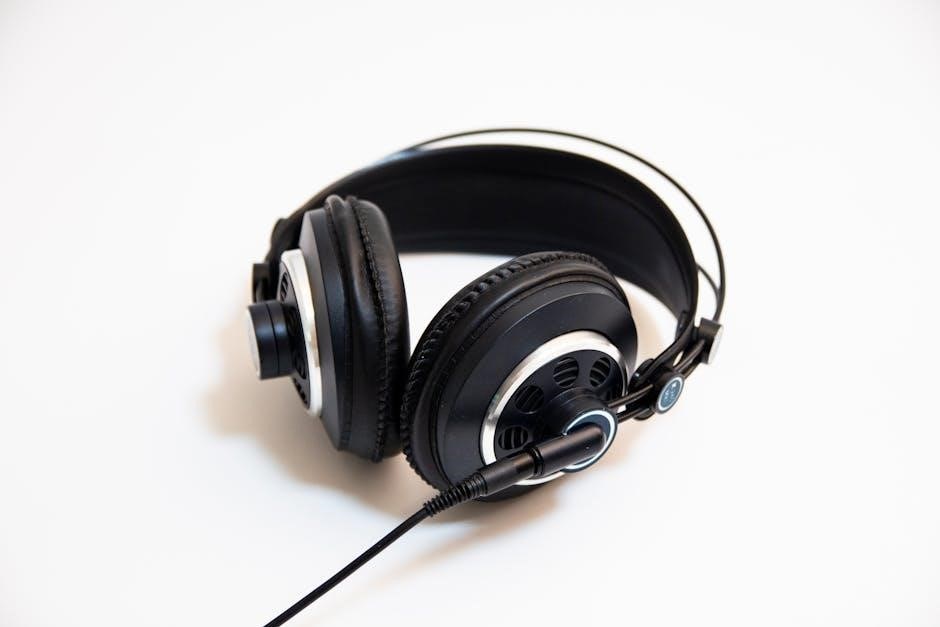
Maintenance and Care
Regular maintenance is crucial for your boat’s stereo system. Check for corrosion, clean connections, and store components securely to ensure longevity and optimal performance over time.
Regular Checks for Corrosion
Regularly inspect all wiring and connections for signs of corrosion, a common issue in marine environments. Saltwater and humidity can quickly degrade metal components, leading to system malfunctions. Use a wire brush to gently clean corroded areas and apply a protective coating or marine-grade sealant to prevent further damage. Ensure all terminals are tight and free from rust. Replacement of severely corroded parts is essential to maintain reliability. Schedule these checks before each boating season to ensure your stereo system remains in top condition and functions flawlessly on the water.
Cleaning the System
Regular cleaning is crucial for maintaining your boat stereo system’s performance and longevity. Use a soft, dry brush to gently remove dust and debris from the head unit, speakers, and wiring connections. For tougher stains or grime buildup, lightly dampen a cloth with fresh water and mild soap, but avoid harsh chemicals or abrasive cleaners. Never spray liquids directly onto components. After cleaning, ensure all surfaces are completely dry to prevent moisture damage. Regular maintenance not only enhances sound quality but also protects against corrosion and electrical issues, ensuring your system functions optimally for years to come.
Storing the Boat Stereo System
Properly storing your boat stereo system is essential to protect it from damage and ensure longevity. When not in use, disconnect the power source and store components in a dry, cool place away from direct sunlight. Use protective covers for the head unit and speakers to prevent dust buildup. Avoid exposing the system to extreme temperatures or moisture, as this can lead to corrosion or electrical issues. Secure all wires and cables neatly to prevent tangling or damage. Regularly inspect the system before and after storage to ensure all parts are in good condition. This careful approach will help maintain your marine audio system’s performance and reliability.
Installing a boat stereo system requires careful planning and attention to detail. Always follow safety guidelines and use marine-grade materials to ensure reliability and durability. Enjoy your upgraded audio experience on the water!
Final Tips for a Successful Installation
For a successful boat stereo installation, always use marine-grade wire to prevent corrosion and ensure durability. Properly ground all components to avoid electrical noise and interference. Keep wires away from heat sources like engines and exhaust systems. Use a wiring diagram specific to your system to avoid confusion. Test each connection before finalizing the setup. Consider installing a fuse holder to protect your system from power surges. Regular maintenance checks will help prevent issues and extend the life of your audio system. Enjoy your time on the water with a well-installed stereo system!
Enjoying Your Upgraded Marine Audio System
With your marine audio system installed, it’s time to enjoy the fruits of your labor! Whether cruising or anchored, your upgraded system will elevate your boating experience. Ensure all connections are secure and test the sound quality across all speakers. Experiment with equalizer settings to optimize your audio. Consider creating playlists tailored for different moods or activities. Don’t forget to integrate additional features like Bluetooth for seamless connectivity. Properly adjust volumes to enjoy clear sound without distortion. Finally, take pride in your handiwork and share the enhanced experience with friends and family on the water!
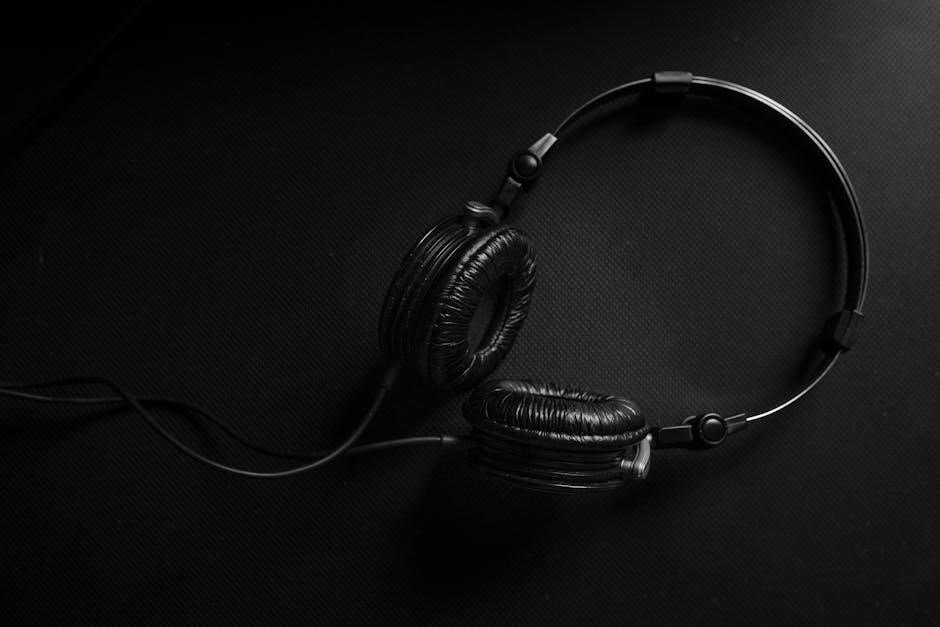
Additional Resources
Explore wiring diagrams, online forums, and professional services for further guidance. These resources offer detailed instructions, expert advice, and support for your marine audio system installation.
Recommended Wiring Diagrams
Wiring diagrams are essential for a successful marine audio installation. They provide visual representations of connections, ensuring components like amplifiers, speakers, and power sources are linked correctly. Look for diagrams specific to your stereo model, as they detail pin assignments and wire colors. Many manufacturers offer downloadable diagrams, while marine electronics forums and websites also share comprehensive guides. These diagrams often include tips for routing wires, avoiding interference, and ensuring proper grounding. For custom setups, create a diagram to map your system’s unique configuration. Always refer to these guides to avoid errors and ensure compliance with marine electrical standards.
Online Forums and Communities
Online forums and communities are invaluable resources for boat stereo wiring. Platforms like marine electronics forums and DIY audio groups offer extensive discussions, troubleshooting tips, and expert advice. Members share personal experiences, wiring diagrams, and installation guides, helping you navigate complex setups. These communities are perfect for resolving common issues, such as no sound problems or intermittent connections. Additionally, they provide insights into customizing your system, like adding Bluetooth or upgrading to multi-zone audio. Engaging with these forums can save time, reduce frustration, and ensure a professional-grade installation. They are a must-visit for both beginners and seasoned installers seeking reliable solutions. Active participation fosters learning and collaboration, enhancing your overall marine audio experience. Always check these forums for the latest trends and troubleshooting techniques. They are a treasure trove of knowledge, ensuring your boat stereo system performs at its best.
Professional Installation Services
For a seamless and stress-free experience, consider hiring professional installation services. Experts in marine audio systems ensure your boat’s stereo is installed safely and efficiently. They handle complex wiring, amplifier setups, and speaker configurations. Professionals use high-quality materials like marine-grade wires and protect against moisture and interference. They also offer customized solutions, such as multi-zone systems or subwoofer integration. With their expertise, you avoid costly mistakes and ensure optimal performance. Many services provide warranties and post-installation support, giving you peace of mind. Whether you’re upgrading or starting fresh, professionals deliver a reliable, long-lasting audio system tailored to your boat’s needs. Their work adheres to safety standards, protecting your vessel from electrical hazards. By choosing professionals, you ensure your marine audio system sounds exceptional and lasts for years. They are the ideal choice for those seeking a flawless installation without the hassle of DIY challenges. Their attention to detail and specialized knowledge make them indispensable for achieving the best results. Professional installation services are a worthwhile investment for any boat owner looking to enhance their audio experience.